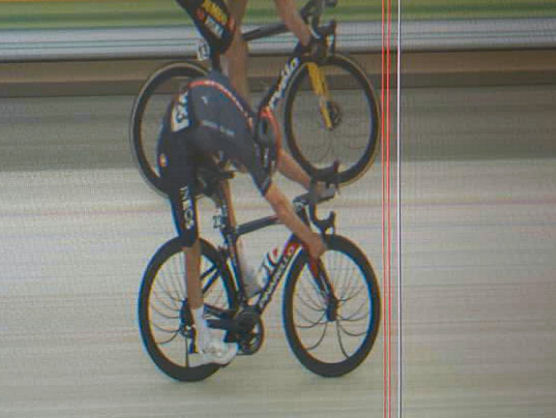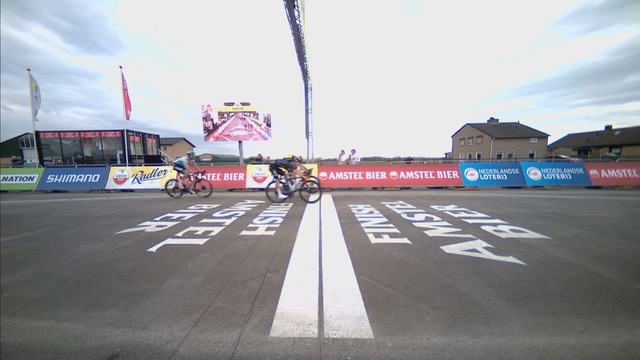In January 2021, an article of the British newspaper The Guardian expressed concerns that the use of refereeing technologies in football would feed into wider efforts to undermine truth and facts as shared reference points for political debate. According to the journalist Tom Lamont, the video assistant referee (VAR) – a system that was incrementally introduced during the late 2010s to check a specified set of situations on video monitors – replaces instantaneous decision taking with the magnification of uncertainty:
All through the US election season, President Donald Trump tried to rub out the distinction between truths and falsehoods. Meanwhile, out on the pitch, it was suddenly impossible to say with any conviction what was offside. Football, instead of distracting us from the strictures of coronavirus and the stresses of political gaslighting, was giving off weird echoes of the larger disarray. We were told that, even if Trump is set to be evicted from the White House and a coronavirus vaccine is being rolled out, we’d better hold off from celebrating; that even if you think you’ve seen a goal, sit on your hands for a bit, it might only have been the ghost of one.
Rather than directly dealing with this statement, I here take it as a starting point for a more conceptual reflection on what football – and sports more broadly – can tell us about the complex relationships between truth, transparency, and controversy. Partly deviating from The Guardian-argument, I consider VAR less a dangerous deviation from the established epistemologies of football than a decisive but characteristic variation thereof. To understand how VAR contributes to contemporary struggles around truth and transparency, it needs to be thoroughly positioned within sports’ long-lasting endeavors to tame structural controversies through augmented visibility.
Competitive spectator sports, as it was established in the 19th century, is characterized by the necessity to take immediate decisions, that are evaluated by critical observers who occupy epistemologically different positions: Some observe the game in the stadium, some in front of the television set; some watch the game as experts with knowledge of all details of the rules, some as occasional but still opinionated observers; some as fans with strong allegiances, some as journalists with an obligation to critical objectivity.
In this complex field of visibility, the actual referees are granted a certain “epistemological privilege” (Collins 2010: 136): They can observe the events from close-by and are trained to classify and judge a plurality of often amorphous phenomena. Becoming a referee involves a training to optimize visibility by positioning yourself in the best way in relation to the action.
Additionally, sports augments the visibility of the competition by drawing straight lines, adding goal posts and nets. While most such elements help the referees (and ideally the wider audience, too) to evaluate the performance, some actually replace the human decision making (Collins and others 2016): the corner flag in football for example guarantees that the ball either leaves the field through the side line or through the goal line – without any ambivalence.
In some sports – especially horse racing – media were added pretty integrated into such optimization of visibility in the form of the photo finish (Finn 2020). Yet even before the use of technical media, sports organizes competition by creating and constantly re-organizing spaces of visibility that arrange the elements of the competition, its potentially decisive events, and a number of differently positioned spectators in a way to optimize the transparency of performance. However, due to the strategic role of visibility, its ongoing re-organization, and the constitutive plurality of different, and often partisan observers, transparency necessarily remains partial and contested.
Media coverage of sports becomes unavoidably entangled with these complex and contested “spaces of visibility” (Scholz 2021). They add new modes of transparency and contribute to the ongoing transformation of the overall arrangement of visibility. Sports is such an interesting case for studying questions of truth, transparency, and controversy not least because it establishes its own institutionalized practices to optimize visibility but – different from e.g. the nature documentary or the scientific laboratory – it has little control over its visibility. It always has to deal with alternative forms of visibility and the mushrooming evaluation of the events by fans, journalists, experts, and very different media forms.
I want to shortly use an example from a very differently organized sport, cycling: At the end of last year’s one day cycling event Amstel Gold race it took about 10 minutes after the end of the race to determine the winner. During these ten minutes, TV footage from the finish line was endlessly repeated with slow motion and freeze frames. While this coverage gives the impression that Tom Pidcock is in front, the jury’s reading of the official photo finish determined Wout van Aert as the winner.


Naturally, this discrepancy caused a commotion on social media and triggered debates about the reliability of both the technology and the organizing bodies. TV commentators needed to concede that the position of their camera was not perfectly aligned with the finish line and that the TV camera’s wide-angle lens, creates a “distorted image. It’s a kind of optical deception.” Adding to that, officials explained that if a result cannot be determined “with the naked eye”, “the photo finish is leading for the result”. In that case, even the painted line on the street is only considered an approximation. According to the regulations, it is the slit photography with its 3.500 photos per seconds that establishes the finish line.
Sports develops highly specific technical set-ups to create epistemic images whose legitimacy is backed by rules and whose evidence results from sports’ definitions of decisive moments. At the same time, though, the authority of these images is constantly threatened by some of sports’ key characteristics: its public decision taking in front of a partisan audience and its multiplied visibilities. The TV coverage simultaneously fetishizes and undermines the authority of technically produced evidence. In the very specific case of the photo finish, the institutional epistemology could still claim superiority over the rogue epistemology of television, but this outcome is far from guaranteed.
Sports striving for augmented visibility to create a fair and legitimate competition offers rich incentives for the application of media technologies. This goes hand in hand with the multiplication of visibilities which also fosters journalistic and fan forensics that partly delegitimise institutional decision taking.
Coming back to The Guardian opinion piece, I would summarize: Instead of undermining the “distinction between truths and falsehoods” sports entangles transparency and controversy in a highly dynamic way: From the start it aims at improving transparency but it has to deal with a plurality of competing observer perspectives. All efforts to reduce controversies through technical images not only multiply the images but also display the ambivalences and unavoidable shortcomings of the logistics and procedures that enable transparency.
References
Collins, Harry. (2010). The Philosophy of Umpiring and the Introduction of Decision-Aid Technology. Journal of the Philosophy of Sport, 37.2: 135–46 <https://doi.org/10.1080/00948705.2010.9714772>
Collins, Harry, Robert Evans, and Christopher Higgins. (2016). Bad Call: Technology’s Attack on Referees and Umpires and How to Fix It, Cambridge, MA, The MIT Press
Finn, Jonathan M. (2020). Beyond the Finish Line: Images, Evidence, and the History of the Photo-Finish, Montreal Kingston London Chicago, McGill-Queen’s University Press Scholz, Sebastian. (2021). Epistemische Bilder: Zur medialen Onto-Epistemologie der Sichtbarmachung, Bielefeld, transcript

